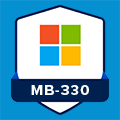
Duration: 4 Days
After completing this course, candidates will be able to:
Module 1: Implement Product Information Management
This module will introduce you to how to implement product to the following topics:
Lessons:
Module 2: Implement Inventory Management
This module will introduce you to the following areas:
Lessons:
Hands-on Lab:
Module 3: Implement and Manage Supply Chain Processes
This module will introduce you to the following topics:
Lessons:
Hands-on Lab: Case study 2A Procurement and sourcing
Hands-on Lab: Case study 2B Sales and marketing
Module 4: Implement Warehouse Management and Transportation Management
This module will introduce you to the following topics:
Lessons:
Hands-on Lab: Case study 3 Warehouse management and transportation management
Module 5: Configure and Manage Quality Control and Quality Management
This module will introduce you to the following topics:
Lessons:
Hands-on Lab: Case study 4 Quality control and quality management
Module 6: Implement Master Planning
This module will introduce you to the following topics:
Lessons:
Hands-on Lab: Case study 5 Master planning
A Microsoft Dynamics Certified Trainer.
£1,599+VAT
Clientele ➞























Our Partners




